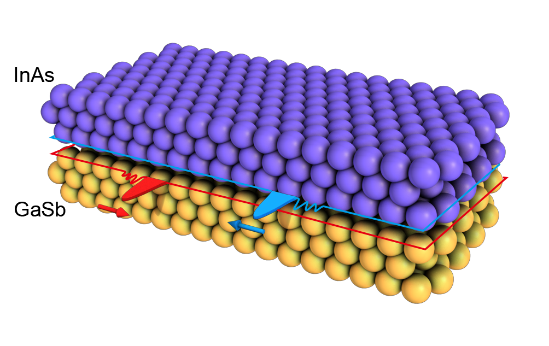Prof. Rui-Rui Du and his collaborators publish a paper on Physical Review Letters reporting the observation of a helical Luttinger-liquid state
Recently, Prof. Rui-Rui Du, and Prof. Xi Lin of ICQM, in collaboration with Prof. GáBor Csáthy of Purdue University, discovered a new electronic state called ‘Helical Luttinger liquid’ in InAs/GaSb quantum spin Hall edges. This is the first experimental observations of a Luttinger -liquid state in topological materials.
The Luttinger liquid describes one-dimensional (1D) interacting electron system. During the past 20 years, theoretical and experimental studies of Luttinger liquid have become a frontier of condensed matter physics. Carbon nanotubes, as well as fractional quantum Hall edge states, have been experimentally studied as spinful Luttinger liquid and chiral Luttinger liquid, respectively. Topological materials have recently attracted a lot of interest in condensed matter physics, and the quantum spin Hall insulator (QSHI) is one of them. In 2011, Prof. Rui-Rui Du group first experimentally proved that InAs/GaSb semiconductor quantum wells system can form a new type of QSHI (PRL 107, 136603). Recently, by ultra-low temperature transport measurements, they found that electrons in InAs/GaSb edge states exhibit Luttinger-liquid behavior, where the resistance of the edge states increases following a power-law with the decreasing of temperature and bias voltage. The underlying physics, often referred as ‘helical Luttinger liquid’, is quite distinct from the known types of Luttinger liquids due to the helical nature (i.e. spin-momentum locking) of the QSHI edge states.
The results indicate that strong electron-electron interaction effects could play important roles in symmetry-protected topological matters, influencing their electronic properties in a fundamental way. This finding offers a platform for studying novel quantum correlation effects, such as e/2 charge excitations. More importantly, interacting helical edge states coupled with superconductors can support parafermionic modes, which are promising for topological quantum computation.
The results will be published in Physical Review Letters (PRL 115, 136804) as an Editor’s Suggestion paper. Prof. Rui-Rui Du is the corresponding author, and Tingxin Li, his Ph. D. student at ICQM, is the first author of this paper.
The work in Peking University was supported by National Basic Research Programs of China, and National Natural Science Foundation of China.


Left figure: Schematic drawing of soliton-like excitations in the edge of InAs/GaSb QSHI. Right figure: The temperature and bias voltage dependence of the measured helical edge conductance.